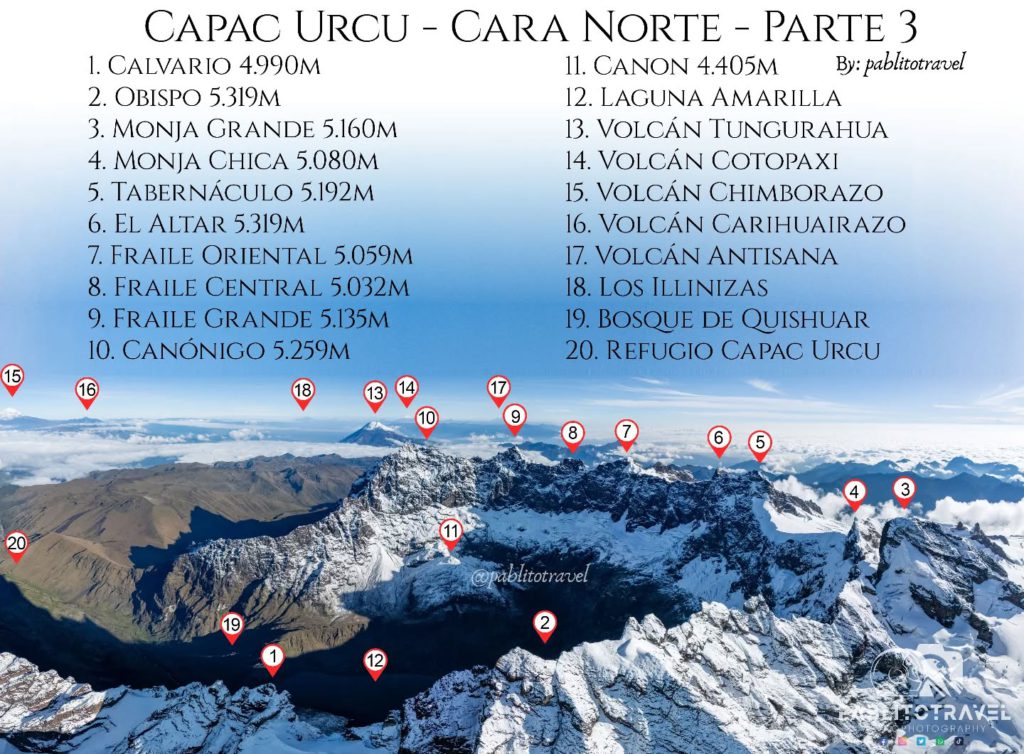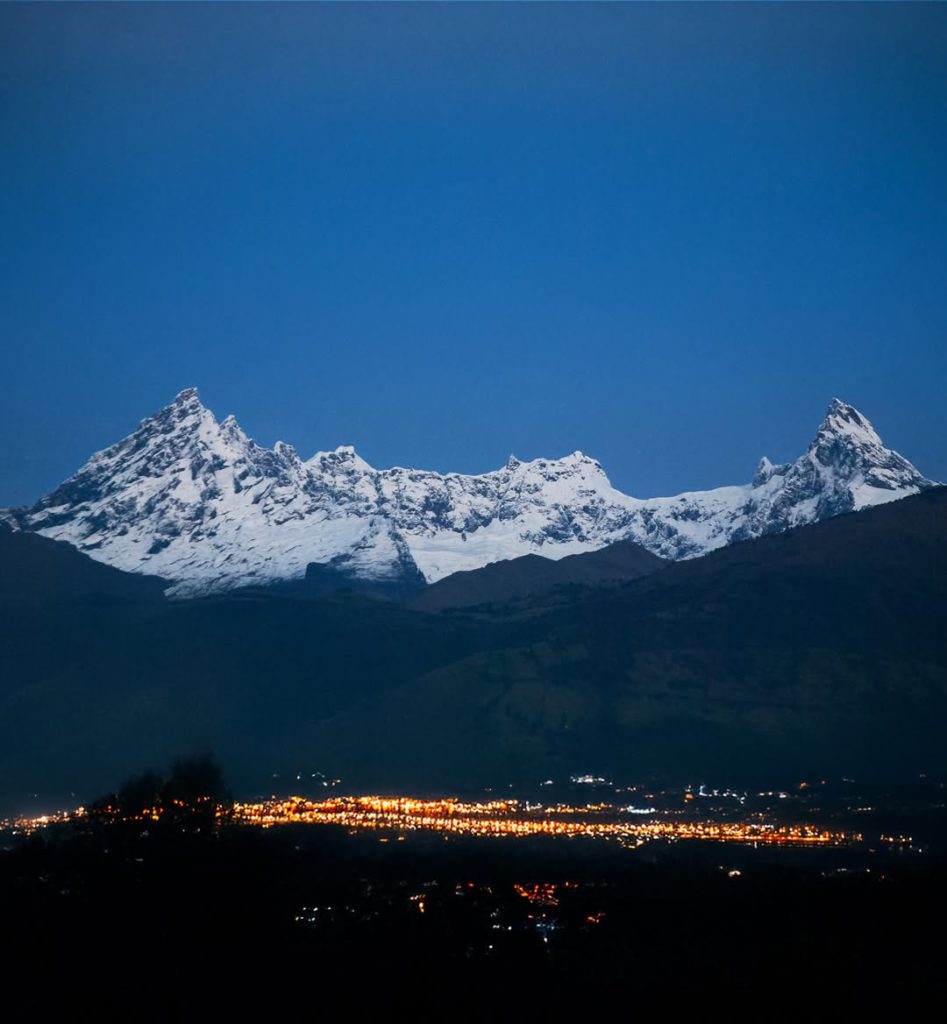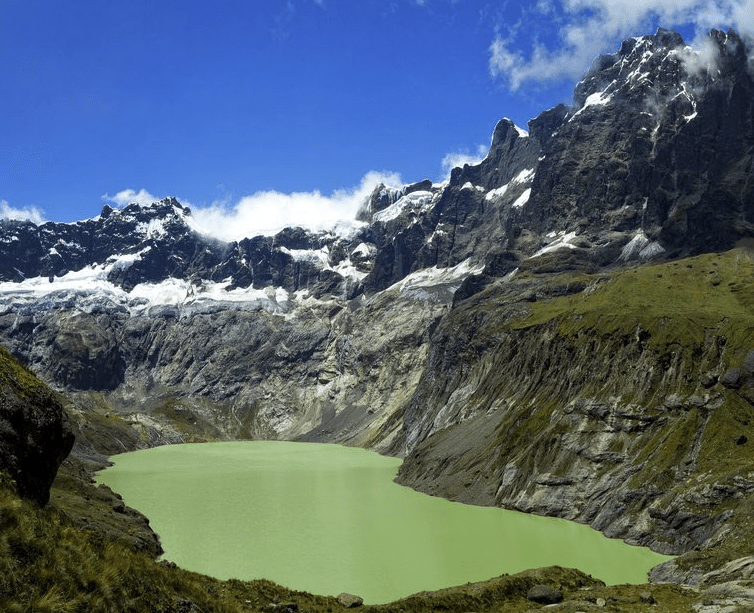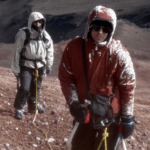Deep in the heart of Ecuador’s Sangay National Park stands one of the most spectacular and challenging peaks in the Andes – El Altar. This extinct volcano, known to the indigenous Kichwa people as Capac Urcu (meaning “Sublime Mountain” or “Lord of the Mountains”), presents climbers with what many consider the most technically demanding mountaineering in all of Ecuador.
A Mountain Cathedral in Sangay National Park
When Spanish conquistadors first laid eyes on this magnificent mountain, they were struck by its resemblance to a grand cathedral. The mountain’s distinctive horseshoe-shaped arrangement of peaks looked like two nuns and four friars gathered around a bishop delivering mass at an altar, leading to its Spanish name “El Altar” – The Altar.
Located approximately 170 kilometers south of Quito, El Altar consists of a large stratovolcano with a caldera breached to the west, formed during the Pliocene-Pleistocene age. According to Inca legend, the mountain’s dramatic collapse occurred around 1460 after seven years of volcanic activity, though geologists believe the caldera formation is much older.
El Altar’s Nine Sacred Peaks
El Altar’s most striking feature is its collection of nine major peaks, each rising above 5,000 meters and arranged in a dramatic horseshoe formation. German explorer Hans Meyer christened these summits with religious names that reflect the mountain’s cathedral-like appearance:
The Northern Face (Cara Norte) – Part 3:
The Highest Peaks:
- Calvario (4,990m) – The Calvary
- Obispo (5,319m) – The Bishop (the highest peak)
- Monja Grande (5,160m) – The Great Nun
- Monja Chica (5,080m) – The Little Nun
- Tabernáculo (5,192m) – The Tabernacle

The Frailes (Friars):
- El Altar (5,319m) – The main altar
- Fraile Oriental (5,059m) – The Eastern Friar
- Fraile Central (5,032m) – The Central Friar
- Fraile Grande (5,135m) – The Great Friar
Other Notable Peaks:
- Canónigo (5,259m) – The Canon
- Canon (4,405m) – The Canon
- Laguna Amarilla – The Yellow Lake
- Volcán Tungurahua – Tungurahua Volcano
- Volcán Cotopaxi – Cotopaxi Volcano
- Volcán Chimborazo – Chimborazo Volcano
- Volcán Carihuairazo – Carihuairazo Volcano
- Volcán Antisana – Antisana Volcano
- Los Illinizas – The Illinizas
- Bosque de Quishuar – Quishuar Forest
- Refugio Capac Urcu – Capac Urcu Refuge
The Crown Jewel: El Obispo
El Obispo at 5,319 meters is both the highest peak and the most popular climbing objective on El Altar. This imposing summit represents some of the finest technical climbing in Ecuador, with routes that demand advanced mountaineering skills including steep ice climbing up to 70 degrees and technical rock climbing.
The route to El Obispo is graded D+, requiring very good physical condition and proven alpine mountaineering and rock climbing experience. The mountain was first climbed in 1963, making it the last of the major peaks in Ecuador to be summited.
A Legendary Collapse
The mountain’s dramatic formation is steeped in both legend and geology. According to local legend, El Altar attempted to steal Tungurahua, who was Chimborazo’s wife. Chimborazo went to war against El Altar and won, leaving El Altar smashed. This mythical battle explains the mountain’s current broken appearance – a massive caldera surrounded by towering peaks.
Before its collapse approximately 500 years ago, El Altar is said to have been one of the world’s tallest peaks. Today, the collapsed crater contains the beautiful Laguna Amarilla (Yellow Lake) at approximately 4,200 meters elevation, creating one of the most spectacular high-altitude lake settings in the Andes.
Climbing Challenges and Rewards
El Altar presents unique challenges that set it apart from other Ecuadorian peaks. It is the most technical of all the mountains in Ecuador, featuring the hardest climbing in the country. The mountain’s proximity to the Amazon rainforest creates unpredictable weather patterns, making December through February the best months to attempt an ascent.
The standard approach involves a demanding trek to the Italian Camp (Campo Italiano) at around 4,600 meters, perched on a ridge overlooking the glacier. From there, climbers face a pre-dawn alpine start involving steep snow and ice leading to the upper glacier, followed by a narrow gully of steep ice to an exposed notch in the summit crest.
Fortunately Trekking El Altar, is much more accessible.
Ecological Wonderland
Beyond its climbing challenges, El Altar sits within a remarkable ecological zone. The ecosystems along the route range from tropical forests to glaciers, transitioning from seemingly tropical landscapes at the base to the unique Andean Páramo grasslands. This high-altitude tundra-like ecosystem plays a crucial role in Ecuador’s water supply, with an incredible ability to store water through its specialized vegetation.
Sangay National Park, where El Altar is located, is listed as a UNESCO World Heritage Site and is home to spectacled bears, condors, Andean gulls, white-tailed deer, and foxes.

Planning Your Adventure
For those seeking to experience El Altar without the extreme technical demands of the summit, trekking to the numerous lakes within the caldera offers a more accessible but equally spectacular adventure. The trek typically takes 1-2 days and provides access to lakes with names like Estrellada, Verde, Azul, and Mandur, each displaying unique colors and connected by waterfalls and mountain streams.
Essential Information:
- Location: Sangay National Park, 170km south of Quito
- Highest Point: El Obispo (5,319m)
- Climbing Season: December – February
- Difficulty: D+ (very technical)
- Access: Via Riobamba to Candelaria, then Bocatoma trailhead
- Permits: Required through Sangay National Park
A Sacred Experience
Whether you’re drawn to El Altar for its world-class technical climbing or its stunning natural beauty, this sacred mountain offers an unforgettable encounter with the raw power of the Andes. The native name Capac-Urcu, meaning “Sublime Mountain,” perfectly captures the awe-inspiring experience of standing among these towering peaks, where ancient legends meet geological wonder in one of Ecuador’s most spectacular settings.
For mountaineers seeking the ultimate Ecuadorian challenge, El Altar represents the pinnacle of technical climbing in the country. For trekkers and nature lovers, it offers a gateway into one of South America’s most pristine and diverse ecosystems. In either case, El Altar stands as a testament to the incredible natural heritage of Ecuador and the enduring power of mountains to inspire and challenge the human spirit.
Jake is originally from Sydney and co-founded Ecuador Eco Adventure with Wlady back in 2006. Together they built one of the country's most prominent climbing and hiking agency that is number one in summit attempts of Chimborazo, Cotopaxi, Antisana, and Cayambe. Ecuador Eco Adventure has since been recommended in National Geographic Adventure, The Rough Guide, and the Lonely Planet.




0 Comments